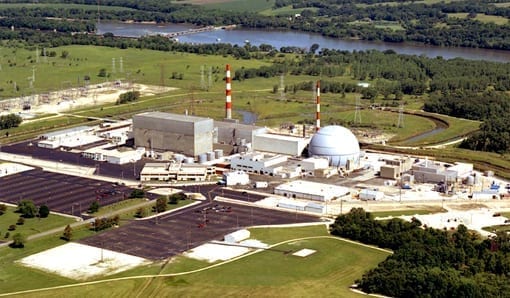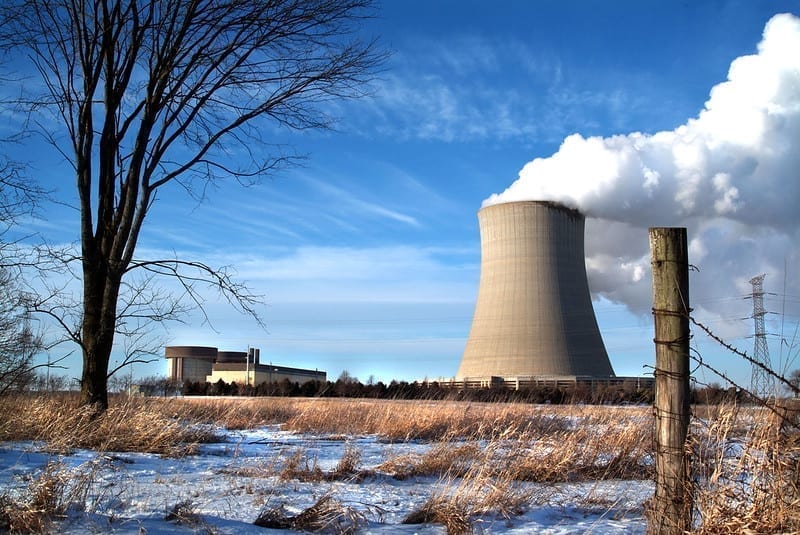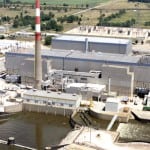In a stunning announcement, Exelon Generation, which operates the largest U.S. fleet of nuclear plants—21 reactors at 12 facilities in Illinois, Maryland, New York, and Pennsylvania—said it will retire the Byron and Dresden generating stations next fall for economic reasons.
“Although we know in our heads that shutting down the uneconomic Illinois plants is necessary to preserve even more jobs elsewhere, our hearts ache today for the thousands of talented women and men that have served Illinois families for more than a generation and will lose their jobs because of poorly conceived energy policies,” Christopher Crane, president and CEO of Exelon, said in a statement. “But we are only about a year away from shutdown and we need to give our people, the host communities, and regulators time to prepare.”
Massive Clean Energy Generation
The Dresden Generating Station (Figure 1) has two operating boiling water reactors that combine for a total net generating capacity of 1,845 MW. Unit 2 began commercial operation on April 13, 1970, while Unit 3 entered commercial service on July 22, 1971. The units are licensed to operate until Dec. 22, 2029, and Jan. 12, 2031, respectively. The facility operated at a very respectable capacity factor of 93.3% in 2019.

The Byron facility (Figure 2) is also a dual-unit plant. It has pressurized water reactors and a total net capacity of 2,347 MW. Unit 1 entered commercial operation on Sept. 16, 1985, and Unit 2 followed on August 2, 1987. The reactors are licensed through Oct. 31, 2044, and Nov. 6, 2046, respectively. The facility had an impressive 96.9% capacity factor in 2019. Together, Byron and Dresden employ more than 1,500 full-time workers, and more than double that during refueling outages, which are performed on each unit every two years and generally take about 20 to 30 days to complete.

Exelon said that despite being among the most efficient and reliable units in the nation’s nuclear fleet, Dresden and Byron face revenue shortfalls in the hundreds of millions of dollars “because of declining energy prices and market rules that allow fossil fuel plants to underbid clean resources in the PJM capacity auction, even though there is broad public support for sustaining and expanding clean energy resources to address the climate crisis.” The company said the plants’ economic challenges are further exacerbated by a recent Federal Energy Regulatory Commission ruling that “undermines longstanding state clean energy programs and gives an additional competitive advantage to polluting energy sources in the auction.”
States Pressured into Action
This is not the first time Exelon has announced plant closures due to economic struggles. In June 2016, the company said it would permanently close the Quad Cities and Clinton nuclear plants because they had lost a combined $800 million during the previous seven-year period. The announcement spurred quick action in the Illinois legislature, and in December that year the Future Energy Jobs Bill (SB 2814) was passed, which saved the facilities.
Exelon was also successful in lobbying for subsidies to support its nuclear plants in upstate New York. The backing came by way of the state’s Clean Energy Standard, which requires all six New York investor-owned utilities and other energy suppliers to pay for the intrinsic value of carbon-free emissions from nuclear power plants by purchasing zero-emission credits. Although a group of generators including Dynegy and NRG Energy filed suit in federal court to block the incentive program, the nuclear subsidies were found to be legally sound.
The subsidies in New York allowed Exelon to keep open the R.E. Ginna plant in Ontario, and the Nine Mile Point facility in Oswego. After the Clean Energy Standard was proposed, Exelon also purchased and kept open the James A. FitzPatrick nuclear plant in Scriba, which Entergy had planned to retire.
However, Exelon’s lobbyists haven’t always been successful. In May 2017, the company announced plans to retire the Three Mile Island (TMI) nuclear power plant by September 30, 2019, unless policy reforms were enacted in Pennsylvania. That declaration got policymakers talking, but in the end, they did not take action. Exelon ultimately followed through and closed TMI, taking the unit offline for the final time on Sept. 20, 2019, even though its license would have allowed the unit to operate for nearly 15 years longer.
Policymakers Are on the Clock
In the days and weeks ahead, Exelon said it will file a deactivation notice with PJM, and inform key stakeholders and regulatory agencies of the retirements. In addition, the company said it will:
- Make official shutdown notifications to the Nuclear Regulatory Commission within 30 days.
- Terminate capital investment projects required for long-term operation of Dresden and Byron.
- Scale back the refueling outages scheduled for this fall at Dresden and Byron—a move the company said would save about $50 million.
“We recognize this comes as many of our communities are still recovering from the economic and public health impacts of the pandemic, and we will continue our dialogue with policymakers on ways to prevent these closures,” said Crane. “To that end, we have opened our books to policymakers and will continue to do so for any lawmaker who wishes to judge the plants’ profitability.”
“Today’s unfortunate announcement comes after a long fight to keep these nuclear plants online,” Maria Korsnick, president and CEO of the Nuclear Energy Institute, an industry trade association, said in a statement. “Given the urgency of the climate crisis, it is unacceptable to lose more clean energy at a time when we should be expanding our sources of carbon-free energy like always-on, carbon-free nuclear power.”
Hard-to-Replace Carbon-Free Power
Exelon said its LaSalle and Braidwood nuclear stations in Illinois, which are dual-unit facilities and employ more than 1,500 workers, are also at high risk for premature closure. According to Exelon, if all four economically challenged plants (Dresden, Byron, Braidwood, and LaSalle) were to be prematurely retired, the electric-sector emissions in Illinois would increase by 70%. The company said progress toward a 2025 greenhouse gas emissions goal that the state committed to last year would decrease from 85% to only 20%, making it seemingly unachievable.
“As our country’s largest source of carbon-free energy, nuclear is the backbone of our future electricity supply. It is in our nation’s best interest to reverse the troubling trend of premature closures of nuclear plants and push for policies that value the carbon-free electricity that nuclear energy provides. That is why state legislatures and federal policymakers have reached a consensus that a clean energy future is not possible without all carbon-free technologies working together,” said Korsnick.
“We agree with Governor Pritzker that policy reform is urgently needed to address the climate crisis and advance Illinois’ clean energy economy, and we support the objectives of the Governor’s recent energy principles,” said Crane. “That’s separate from today’s announcement to retire these two zero-carbon nuclear plants, which was not a decision made lightly and is one that has been in the works for some time.”
While retirement preparations are underway, Exelon said employees will “continue to operate the plants at world-class levels of safety and operational excellence until they are decommissioned.” The company plans to place affected plant employees at other Exelon facilities or help them transition to positions outside the company, wherever possible.
—Aaron Larson is POWER’s executive editor (@AaronL_Power, @POWERmagazine).










